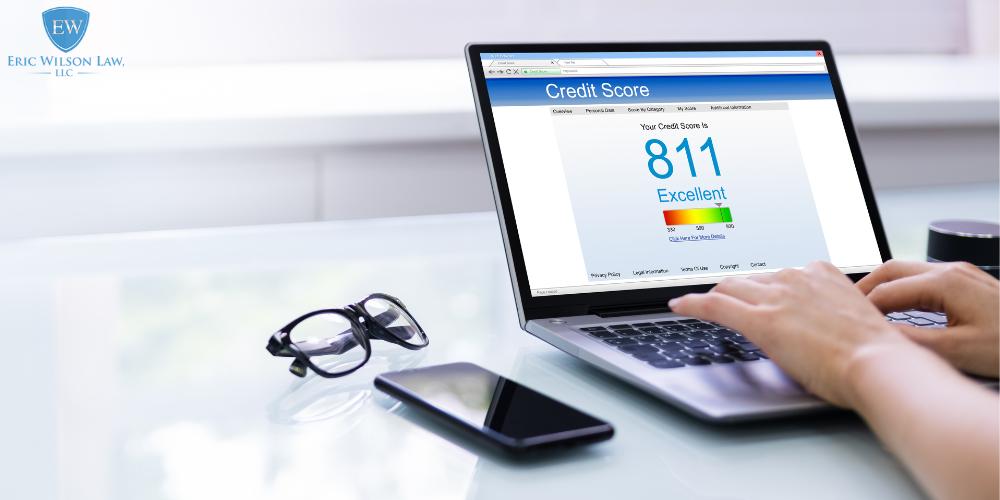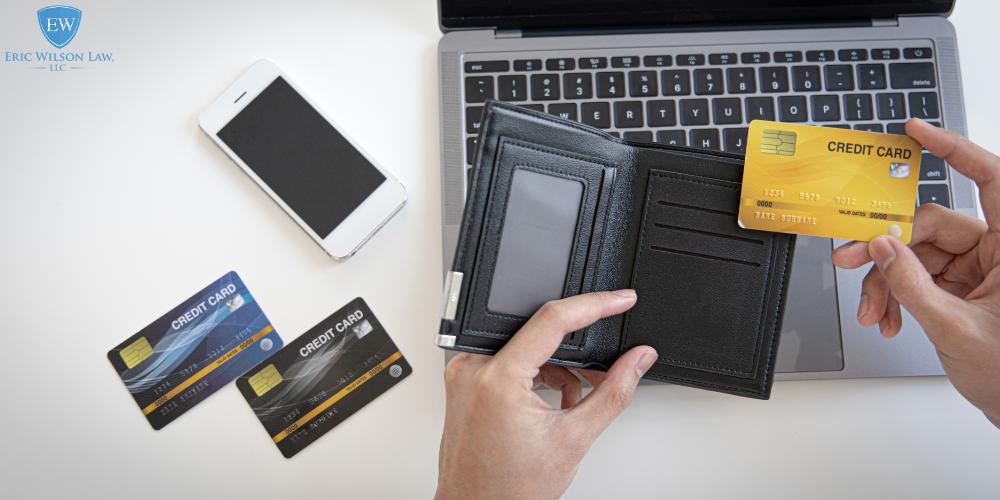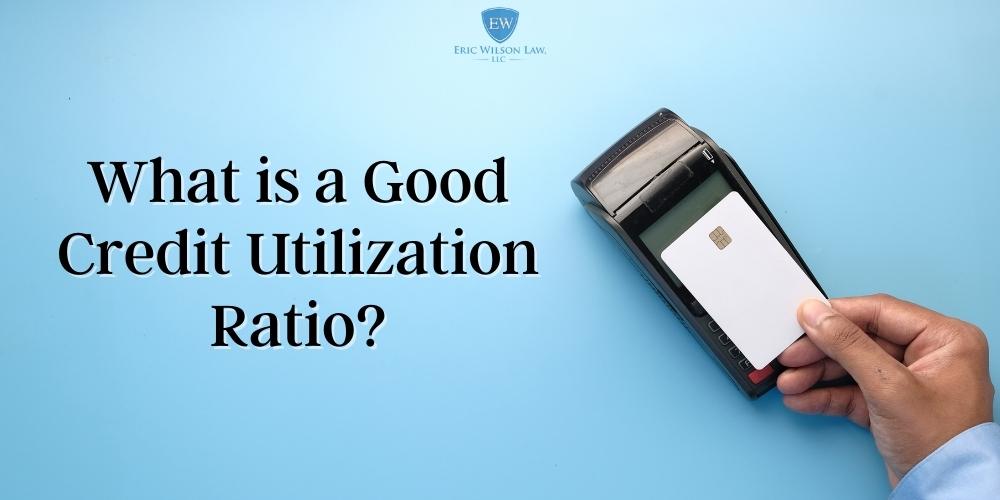Managing your own finances can be confusing. There is so much to keep up with, such as credit reports, credit scores, credit history, debt to income ratios, credit utilization ratios, and more. All of these factors can indicate how financially responsible you are to credit reporting agencies. The credit utilization ratio in particular is one of the most important factors that creates a good credit score. The ratio is basically how much credit you’re currently using divided by how much available credit you have, and it’s a big indicator of financial health. But you may be wondering: what is a good credit utilization ratio? Below, Eric Wilson answers this question and so much more.
If you’re drowning in credit card debt, there is hope. Eric Wilson has been helping his clients live debt free lives for more than 25 years. He can analyze your financial situation without judgment and help you determine the best debt relief method for you. Call 205-349-1280 to schedule a free consultation with Eric Wilson and his team today.
What is a Credit Utilization Ratio?
The credit utilization ratio (also known as the credit utilization rate) is how much credit you’re using divided by how much available credit you have. In other words, the infamous credit utilization rate describes your current debt to credit ratio.
A low credit utilization ratio indicates that you’re not using all of your available credit and you’re keeping your debt under control. Meanwhile, a high credit utilization ratio means that you’re using a large portion of your available credit and you may be struggling to control your credit card debt. Your credit score will likely suffer if your credit utilization rate is too high. We’ll explain more on the relationship between credit utilization rate and credit scores later.
How to Calculate Your Credit Utilization Ratio
Calculating your credit utilization rate is simple. All you have to do is divide your total debt by your total credit limit. Then, multiply this number by 100 to get a percentage. The answer is your credit utilization rate.
What is Revolving Credit?
Credit utilization rates are based on revolving credit, not auto loans or personal loans. The debt to income ratio takes installment loans into account. Revolving credit is credit that doesn’t have a set number of payments. So the amount left over carries over to the next month until you fully pay it off.
Credit cards are the most common and most used type of revolving credit. We all know how it works: you buy something which reduces the amount of available credit you have. You pay off some or all of this purchase, and then you buy something again and again. If you pay off your current credit card balances, you won’t accrue interest every month. You’ll also be able to keep your credit utilization ratio as low as possible. But if you have unpaid credit left over every month, you’ll have to pay interest. The credit continues revolving every billing cycle, hence the name.
Credit Utilization Ratio: Per Card and Total Utilization
As previously stated, the credit utilization rate is your total credit card debt divided by your total credit limit across multiple credit accounts. But it’s important to pay attention to this rate on a single credit card as well. To determine this percentage on an individual credit card account, you would use the same formula mentioned above. The resulting percentage will tell you how much credit you have used and how much credit you have left.
Similarly to your total credit card utilization rate, you want to keep the rates on individual cards as low as possible.

What is a Good Credit Utilization Ratio?
Now back to the main question: what is a good credit utilization ratio? In order to have the best credit score possible, most credit scoring models recommend that you keep your credit utilization percentage under 30%. For example:
- If your credit limit is $1,000, shoot for less than $300 of debt.
- If your credit limit is $2,000, shoot for less than $600 of debt.
- If your credit limit is $3,000, shoot for less than $900 of debt.
- If your credit limit is $5,000, shoot for less than $1,500 of debt.
A low credit utilization ratio indicates to credit card companies that you’re managing your debt well. Meanwhile, a high credit utilization ratio can be an indication that you’re struggling to manage your credit card bill.
How Does Your Credit Utilization Ratio Affect Your Credit Score?
Your credit utilization ratio is a major factor that determines how high or low your credit score is. In fact, this ratio accounts for approximately 30% of your credit score according to most credit scoring models. Other factors that make up your credit score are payment history, amount of debt owed, new credit, length of credit history, and credit mix.
So having a credit utilization rate of more than 30% can definitely negatively impact your credit score. In fact, 30% is the maximum limit you can have in order to maintain a “good” or “excellent” credit score on the average credit scoring model. Having a “fair” or “poor” credit score can make it difficult to obtain new credit cards and various types of loans like an auto loan or a personal loan.
How to Lower Your Credit Utilization Ratio
If your debt to credit limit ratio is nearing 30%, there is no need to panic. There are plenty of ways to lower your credit utilization ratio, and we explain them below.
- Try to Pay Off Your Credit Card Balances Every Month: This is way easier said than done, especially if you’re struggling with too much credit card debt. Even if you can’t achieve a zero balance on one or more of your cards, do what you can to keep these balances as low as possible. This is the best way to prevent a high utilization ratio.
- Keep All Your Credit Cards Even if You Don’t Use Them: If you’ve finally paid off one or more credit cards, don’t just shred it and close the account. Put all these cards with zero balances in the back of a drawer so that you can keep the credit limits and the credit history. Having several existing accounts will improve your credit score and your credit utilization rate.
- Request a Credit Limit Increase From Your Credit Card Company: If your credit balances indicate that you’re financially responsible, your credit card issuer may grant this request and increase your credit limit. Not only will this increase help your total credit utilization ratio, but it will also improve the ratio on that particular card. Be aware that requesting a credit limit increase may result in a hard inquiry on your credit report, which can take your score down a couple notches. But the improvement on your credit utilization ratio may balance out the hard inquiry credit score-wise.
- Apply For a New Credit Card: One of the best ways to improve the amount of available credit you have is to apply for a new credit card, and use it wisely, of course. If you struggle with overspending on one or more credit cards, this may not be the best idea for you. Also, having too many credit cards with high credit limits compared to your credit mix can impact credit scores. Be sure to think carefully before making financial decisions like this.

Call a Tuscaloosa Bankruptcy Lawyer at Eric Wilson Law Today
If your credit utilization ratio is at or above 30%, it’s safe to say that credit card debt is a major stressor in your life. The good news is that there is hope in completely paying off these outstanding balances, improving your credit score, and living a much happier life. Eric Wilson has been freeing his clients from the weight of credit card debt for more than 25 years. He can help you determine the best debt relief method for you, whether that’s Chapter 7 bankruptcy, Chapter 13 bankruptcy, debt consolidation, and more. Call 205-349-1280 today.


